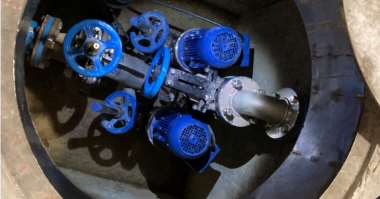If you gathered in a room the managers of 10 manufacturing facilities from 10 different industries located in 10 different countries to discuss the challenges in their operations, they would likely come to at least one consensus: there is no such thing as a “perfect” pumping system.
From the types of media being pumped (viscous or water-then, corrosive or particulate-laden) to the atmospheric conditions in which the operation takes place (indoors or outdoors, high humidity or no humidity) to the actual setup of the piping system (long or short runs, numerous bends or no bends), the sheer number of variables makes the above statement true.
The challenge, then, is to succinctly identify the characteristics of the proposed pumping operation and implement the proper equipment and setup. While no pumping system, like fingerprints or snowflakes, is exactly alike, they do contain some common characteristics that must work in harmony in order to ensure that the pumping system meets the needs of the operator—from a product quality, safety and cost of operation standpoint. In short, there must be collaboration between all sectors of the pumping operation.
Specifically, there are three key elements that must be considered when designing and installing a fluid-handling pumping system. They are:
- Engineering. When the parameters of the pumping system (media to be handled, location, size, atmosphere, etc.) are presented to engineers, they take that information and create an objective plan for implementation. This information is then handed over to the contractor responsible for the installation of the system. Where things may go awry is when there is differentiation between what the engineers recommend and what the contractor (oftentimes through no fault of his own) actually installs. For example, because of unexpected space limitations an extra pipe bend may be required. This seemingly simple alteration may actually throw the operation of the whole system out of kilter. Therefore, seamless communication between the design team and installer is an absolute must.
- Equipment. Selecting the proper piece of pumping equipment may be the most important part of the equation. Again, a number of variables are in play when deciding on the correct pump—size, materials of construction, material compatibility, temperature, pressure, etc. Communication between the engineer, installer and pump manufacturer or distributor is again essential to ensure that the proper pump is selected. Something as seemingly simple as the pump being the wrong size can create a wide-ranging array of negative effects for the pumping operation.
- Operator. Once the pumping system has been installed, it becomes the responsibility of the facility operator, who is in charge of its operation, cleaning and maintenance. The operator may feel that he is on his own at this point, but that is hardly the case. Operators must realize that the pump manufacturer or distributor are always on call should any problems arise in the operation of the pumping system. Again, communication is key in these circumstances, and the manufacturer and distributor must make it known that they are available should the operator have any questions or concerns that need to be addressed.
Basically, the design, installation and operation of a pumping system should be a hand-in-glove operation from step one. When problems do occur—and problems, however minor, will likely occur at some point—the three components must come together again to troubleshoot the problem and quickly come to a proper solution. If there’s a recurring problem, then the entire system, from setup to operation, should be thoroughly reviewed to determine what is happening (or not happening) to cause the problem.
As mentioned, while no two pumping systems are perfect or exactly alike, by keeping the lines of communication open and crossing your t’s and dotting your i’s during system design, installation and operation, you can help avoid the pitfalls that can frustratingly plague a fluid-pumping operation.
Looking to collaborate?
If you would like to discuss your pumping system, please contact me at Kevin.Hogue@psgdover.com.




Comments